Orthodontic treatment is generally very safe and predictable. The most common problem you may have during your new smile journey is an occasional pokey wire or an area of irritation to your lip or cheek. Most challenges you will encounter can be corrected without a visit to the office. However, you should call our office if you experience severe pain or have a painful appliance problem you can't take care of yourself. We'll be able to schedule an appointment to resolve the problem.
Many patients may not realize they can temporarily correct most problems with a simple solution until they can be seen in our office for additional treatment. If there is a loose appliance piece that you can remove, put it in a plastic bag or envelope and bring it with you to your next appointment. If your braces are poking you, put soft wax on the part of the wire or appliance that's sticking out. If the wire has slid to one side, you can pull it back to the other side with needle-nosed pliers or tweezers, replacing it in the tube on the back tooth.
When a temporary fix has been completed, it is still very important that you still call our office as soon as possible to schedule a time to repair the problem. Allowing your appliance to remain damaged for an extended period of time may result in delays to the completion of your orthodontic treatment.
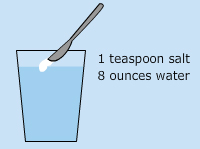
General soreness
After the initial placement of your braces or Invisalign aligners, it is normal to feel some soreness in your mouth. There is typically a 12 to 24 hour delay after the intial placement of your appliances and the discomfort will usually peak at the 24-36 hour mark. This is because your teeth are slowly starting to move and the bone around the roots of your teeth is beginning to remodel - allowing your teeth to straighten. Teeth may be tender to biting pressures for three to five days typically. Stick to a soft diet until it is more comfortable to chew normal foods. Irritated gums and other sore spots can be relieved by rinsing your mouth with a warm salt-water mouthwash. Dissolve one teaspoonful of salt in eight ounces of warm water, and rinse your mouth vigorously.
If you still feel soreness, take Acetaminophen (Tylenol) or whatever you normally take for headache or similar pain. Aspirin, Ibuprofen (Motrin, Advil) and Naproxen Sodium (Alleve, Naprosyn, Anaprox) can actually be more effective at relieving discomfort from orthodontic treatment than Acetaminophen (Tylenol) but should be used more sparingly as frequent use can slow the movement of your teeth. Acetaminophen (Tylenol) and Ibuprofen (Motrin, Advil) act on different pain receptors so alternating between the two can be very effective for discomfort that seems to linger as you are getting accustomed to your new treatment.
Just like getting a new pair of shoes, you may experience a little discomfort as you mouth adjusts to your braces or Invisalign aligners. You can place wax over any surfaces that are rubbing to ease you into the adjustment period. We will show you how to do it.
Elastics
Sometimes discomfort is caused by not wearing your elastics (rubber bands) as instructed by Dr. Budd. Please follow the instructions given to you by Dr. Budd. If you only wear your elastics for part of the recommended time, the teeth have a hard time adapting when the amount of time you are wearing the elastics is constantly changing. The elastics should be more comfortable the more consistently they are worn, so be sure you wear them the recommended number of hours.
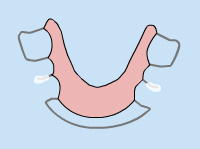
Loose appliance
If your retainer or appliance does not seem to be staying in its normal position or feels loose, please call our office to have it adjusted.
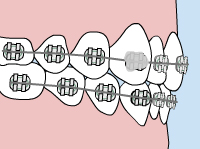
Loose bracket (brace)
If your bracket or band is still attached to the wire but not connected to your tooth, you should leave it in place and put wax on it if needed for comfort. If the bracket or band can be removed easily, place it in an envelope and save it to bring to your next appointment.
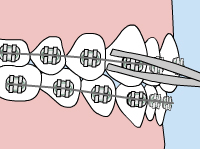
Loose wire
Using a pair of tweezers or needle-nosed pliers, try to put your wire back into place. It is okay to use a piece of floss to tie the wire into place: tie the floss around the bracket in place of the missing colored o-ring. If you cannot put the wire into a comfortable position, and covering the end with wax doesn't help, as a last resort use a small fingernail clipper to clip the wire behind the last tooth to which it is securely fastened. If the end of the wire is still sharp place wax on it.
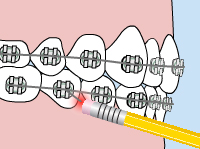
Poking wire
Using a pencil eraser, push the poking wire down or place wax on it so that it is no longer poking.








 Website Powered by Sesame 24-7™
Website Powered by Sesame 24-7™